April 16, 2024
I recently tried the Apple Vision Pro. In one experience, a prehistoric setting opened up in front of me. A butterfly flew out of the scene and, when I put out my hand, landed on my index finger.
What surprised me was that I really expected to feel something, some sensation on my fingertips, as the butterfly’s legs touched my skin. The butterfly looked so real and recognized my hand in space. All that was missing was haptics.
As the fidelity of XR devices increases, users will find themselves - as I did - craving haptics. It’s just one reason VR gloves are back on our radar. Meta investing in haptic tech (again) is another.
Moreover, the most popular XR apps - training, design, and collaboration - are set to mature over the next few years. The addition of haptic gloves could greatly enhance these use cases, improving their efficacy and unlocking greater business value.
Why VR gloves?
Compared to traditional controllers, VR gloves enable more natural and precise interaction in the virtual world and a deeper sense of immersion. When it comes to training, gloves enable learners to develop muscle memory in the virtual world, which increases retention.
VR gloves today can convey the size, shape, and texture of virtual objects and surfaces, making it feel like you’re really touching or holding something in VR. How? In many cases, tiny motors in the glove generate vibrations in specific areas of your hand and fingers, corresponding to what’s happening in the virtual environment.
Pay attention to the creative terms vendors use to describe the underlying mechanisms and capabilities of these devices as you read through the list of available VR gloves below:
Enterprise VR gloves you can buy or pre-order today
SenseGlove Nova and Nova 2
The wireless $4,499 Nova Glove uses four magnetic friction brakes, one for each finger from thumb to ring finger, with each delivering up to 20N of force to the fingertips. Vibrotactile actuators in the thumb and index finger along with a voice coil actuator in the hub of the glove emulate the feeling of using a tool or dashboard. Nova also has sensor-based finger tracking with “computer vision hand tracking algorithms,” and is compatible with HTC VIVE, Meta Quest, and Pico Neo headsets.
Like its predecessor, the nearly $5,999 SenseGlove Nova 2 offers force feedback (so you can feel the size and “stiffness” of a virtual object) and vibrotactile feedback (so you can feel impact). New is “Active Contact Feedback” or “palm feedback” so you can perceive or sense virtual objects in the palm of your hand.
Example use cases include training simulations involving tools and equipment like wrenches, fire hoses, and power tools. SenseGlove’s website also mentions marketing, prototyping, and research. Enterprise users include Volkswagen and P&G.
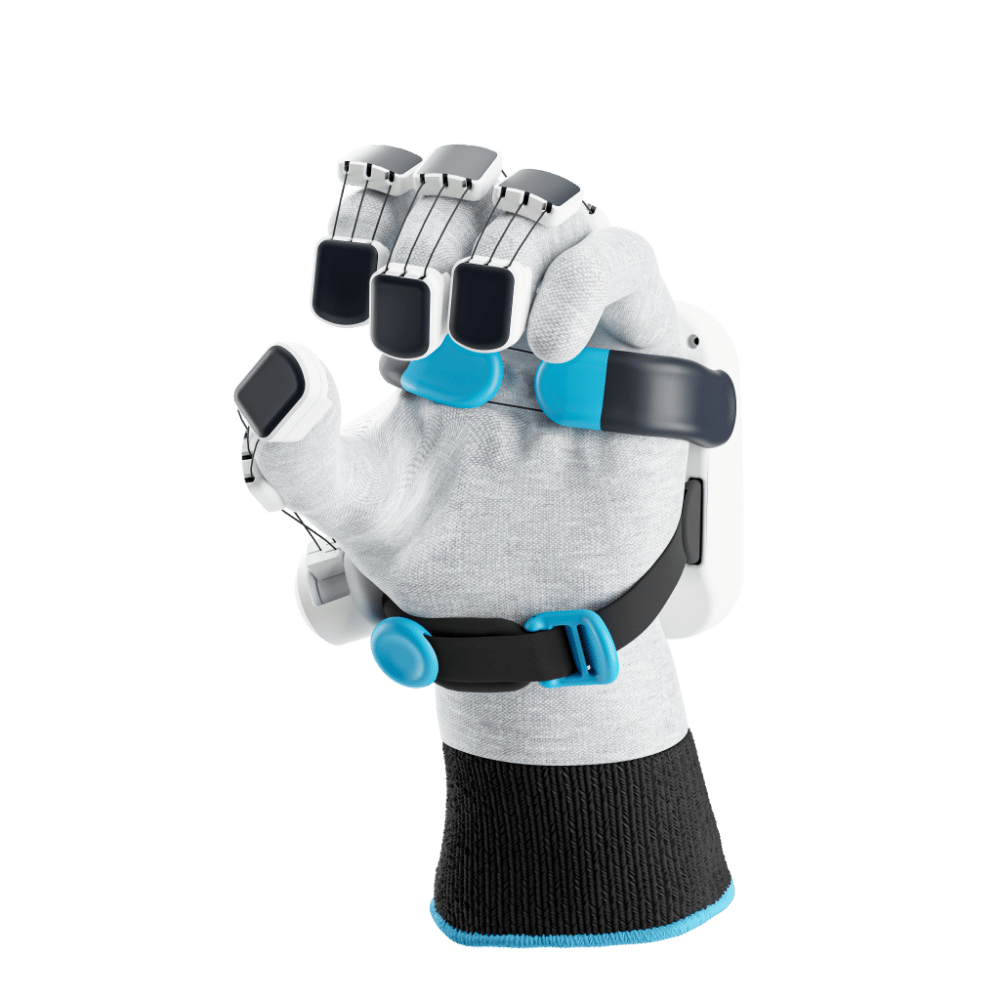
HaptX Gloves G1
HaptX Gloves G1 use microfluidics, pneumatics (compressed air), and sub-millimeter motion tracking to provide rapid “true-contact” haptics.
135 tactile actuators across the fingers and palms inflate to physically displace the user’s skin up to 1.5mm, creating the sensation of touching a virtual object. Meanwhile, pneumatic exotendons capable of applying up to 8 pounds of force per digit (40 lbs/hand) emulate the size, shape, and weight of the object. A separate Airpack can be worn on the back or placed on a table for continuous air supply.
HaptX Gloves G1 come in four sizes, start at $5,495 for an individual pair, and are worn over the hands and forearms. In addition to SteamVR support and plug-ins for Unity and Unreal Engine, there’s a multi-user feature and robotic equipment integration for group training and robotic control use cases.
HaptX’s website says its gloves are for professionals who require “precise manual dexterity and muscle memory.” Highlighted use cases include haptic design reviews, in which you (and others) interact with virtual prototypes, and controlling robotic hands.
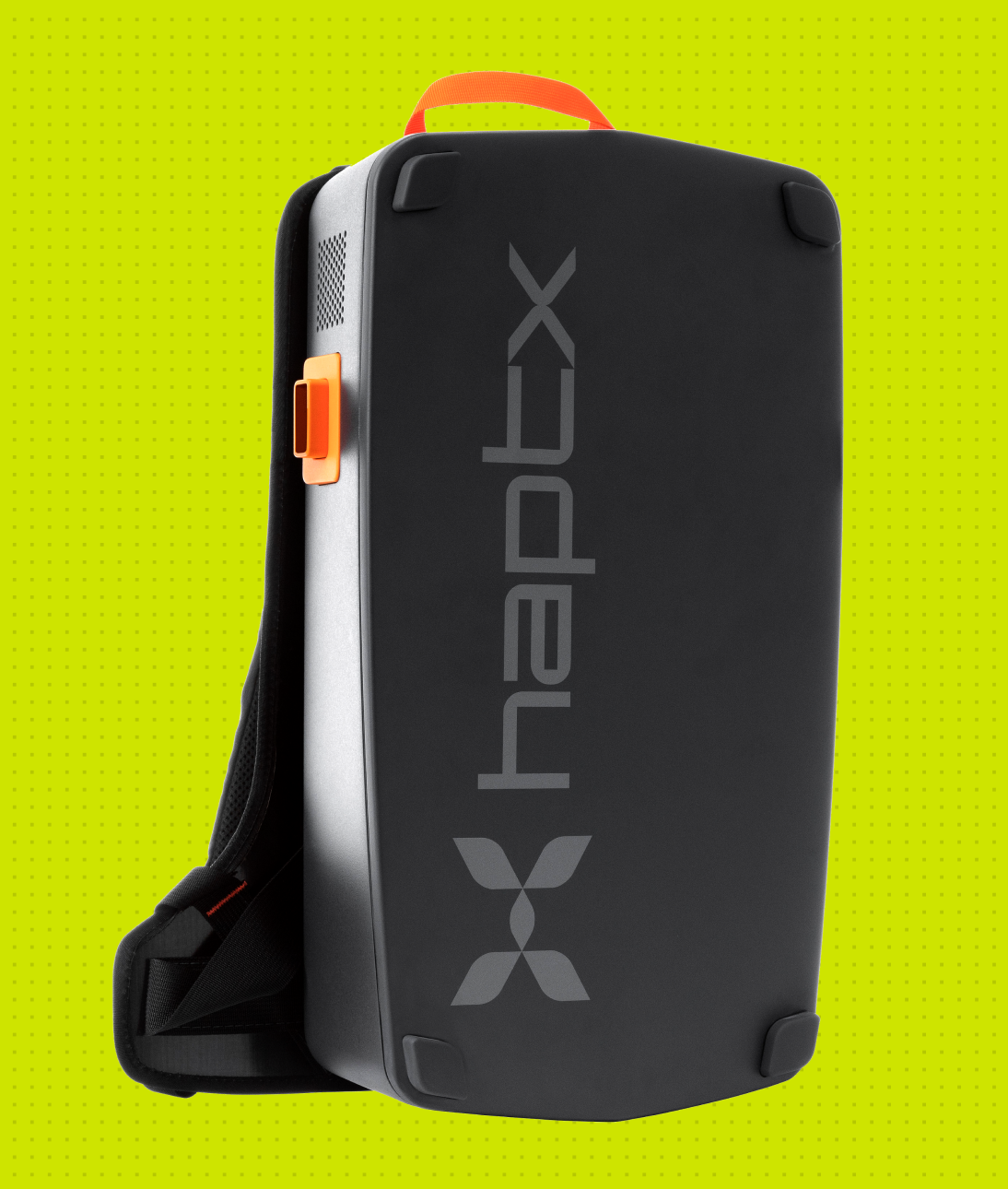
MANUS Prime 3 Haptic XR
The MANUS Prime 3 Haptic XR gloves provide “per-finger haptics” and high-fidelity hand tracking for $2,999. Though the website doesn’t go into detail, the gloves appear to use vibrotactile feedback to simulate the presence of virtual objects in your hand.
MANUS bills the Prime 3 as easy to use. The gloves are compatible with Unity, Unreal, etc., while a mounting system allows you to combine them with external trackers. Swappable batteries provide up to 10 hours of continuous use, while liners help adapt the gloves to your hand size.
The Prime 3 gloves are also “enhanced with Quantum AI,” an advanced machine learning algorithm that improves the captured data in real time for improved accuracy and fidelity. Example use cases include training, virtual prototyping, and design validation.
Then, there’s the precision-focused MANUS Quantum XR Metagloves ($4,999) with “drift-free” fingertip tracking sensors allowing you to interact with “even the smallest parts and pieces'' of the virtual environment. (Think pushing virtual buttons and similar actions.) Tesla is reportedly testing these to create a dataset for training Tesla Bots.
MANUS’s product line heavily stresses motion capture, which lends itself to more developer-targeted use cases such as capturing natural hand movements to bring avatars to life.
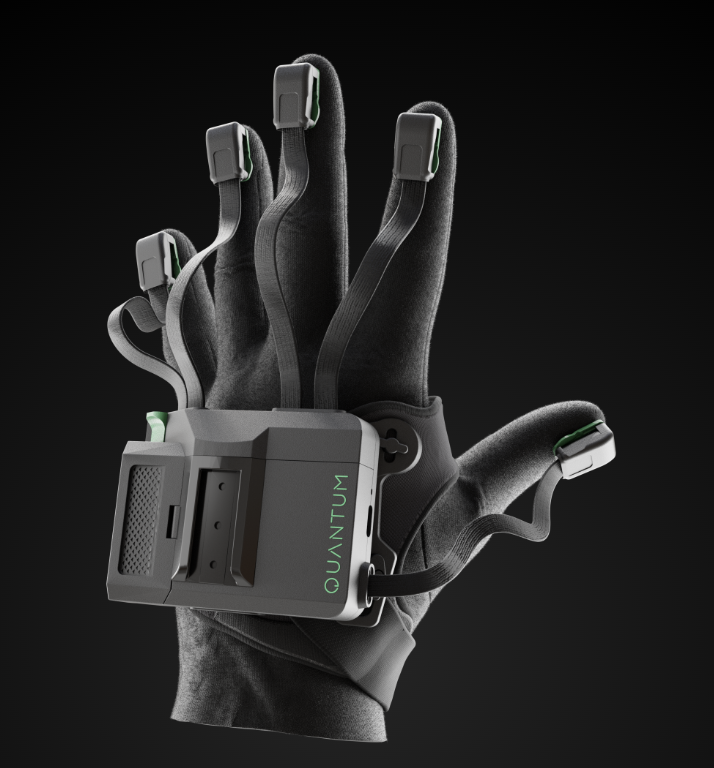
TESLAGLOVE
Teslasuit makes the wireless TESLAGLOVE, which contains “four systems in one:” Haptic feedback, force feedback, finger tracking, and biometrics.
Transcutaneous Electrical Nerve Stimulation or TENS enables haptic feedback. This involves the use of a mild electrical current. There are 45 “channels” per glove, with 3x3 tactile displays on each finger to create the perception of various textures and surfaces.
TESLAGLOVE’s motorized frame - sort of like an exoskeleton around your hand - exerts force and torque on the fingers to “stop your hand” around a virtual object and simulate the vibration of virtual equipment. Finger tracking can be used to improve interactions with virtual objects, trigger events in the virtual world, and more.
Built-in biometric sensors differentiate TESLAGLOVE from other VR gloves. The sensors track information like heart rate, allowing you to measure the user’s physical reactions during an XR experience. You could, for instance, evaluate how an employee responds to stressful situations in a training sim.
TESLAGLOVE is one-size-fits-all with adjustable finger pads, and compatible with TESLASUIT (of course) as well as external Vive and Quest trackers for full-body tracking. A dev kit will set you back a cool $14,999.
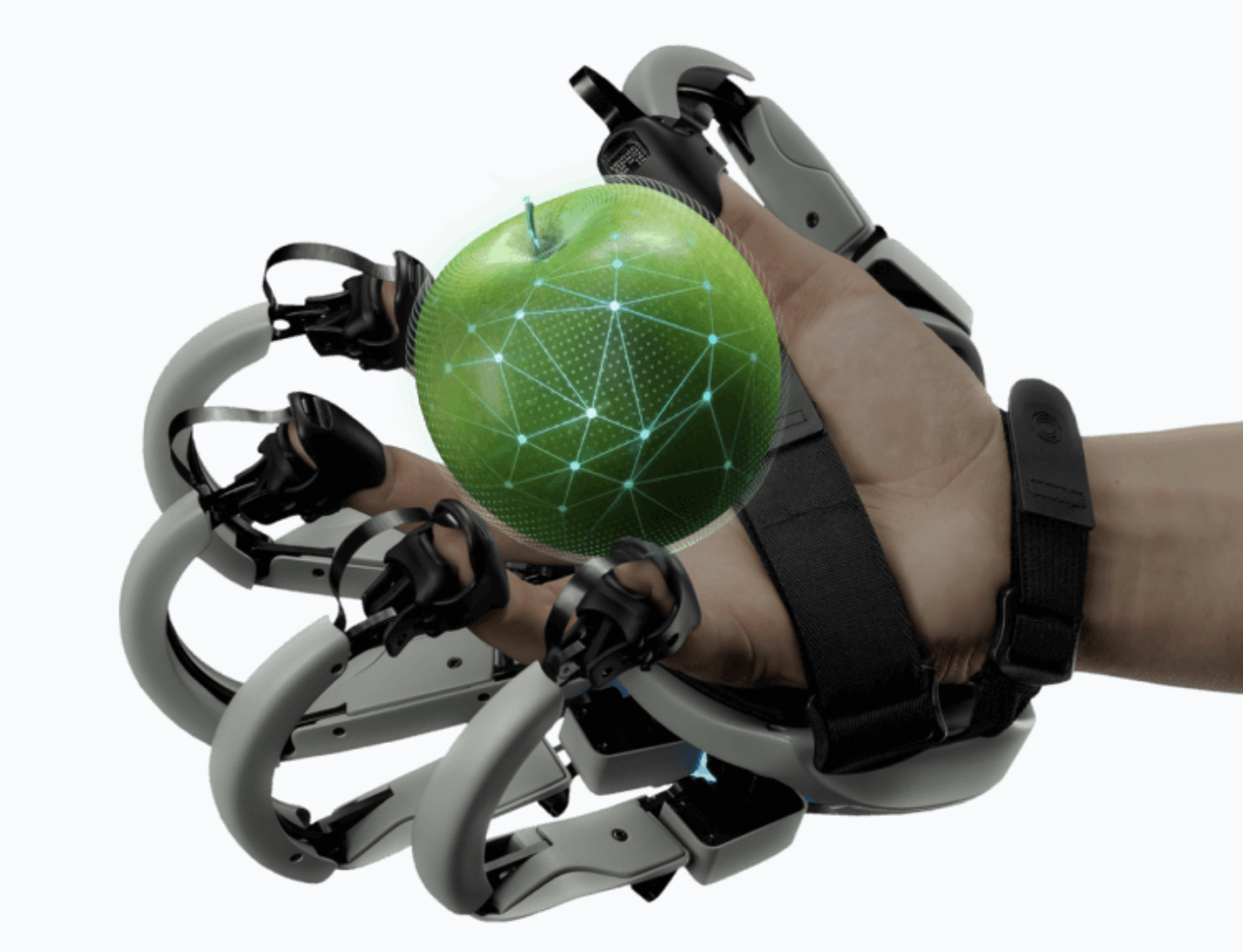
Contact CI Maestro EP
Contact CI’s $3,750 Maestro EP gloves are capable of “multi-force ergonomic” haptics thanks to variable fingertip vibration and exotendon force feedback: Vibrotactile actuation generates over 100 unique vibrations to “engage your hand’s most sensitive touch receptors” on each fingertip, while a proprietary system mimicking human tendons (tendon biomimicry) creates a restricting force on each finger.
Contact CI’s website mentions “complex tangible interactions” such as pushing buttons and flipping switches in a virtual cockpit (as opposed to grasping an object in your palm). As with all of the gloves above, it’s the combination of vibration and force feedback - in this case applied to individual fingers - that enables various touch sensations.
Reviewers have praised Maestro EP as particularly adept at “nuanced haptics.” As for use cases, Contact CI recommends Maestro EP for situations where “hands-on training is too expensive, time-consuming, or dangerous.” It’s been reported that the Department of Defense has purchased at least one pair.
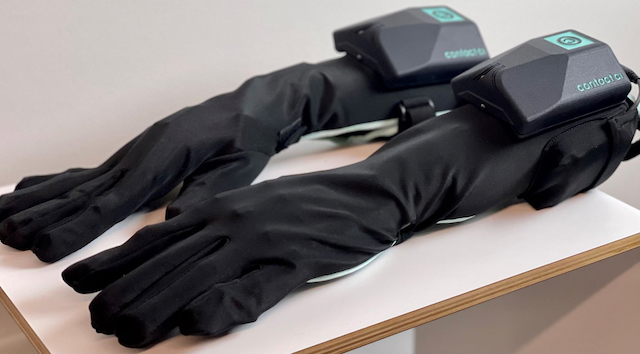
Header image source: HaptX


